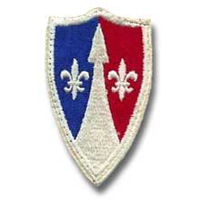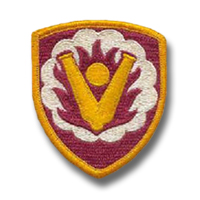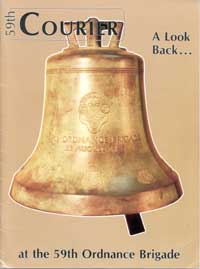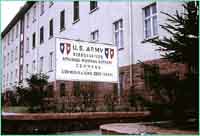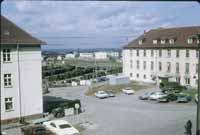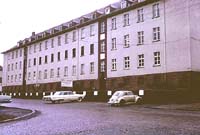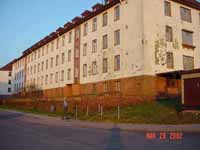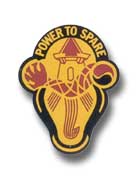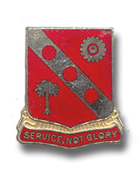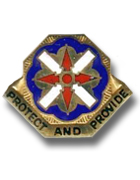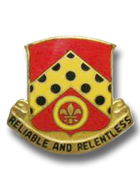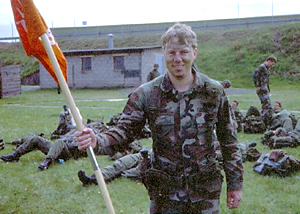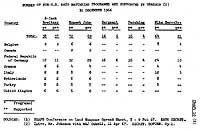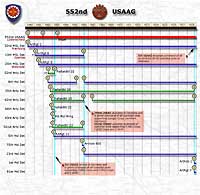| If you do
NOT see the Table of Contents frame to the left of this page, then
Click here to open 'USArmyGermany' frameset |
|||||||||||||||||||||||||||||||||||||||||||||||||||||||||||||||||||||||||||||||||||||||||||||||||||||||||||||||||||||||||||||||||||||||||||||||||||||||||||||||||||||||||||||||||||||||||||||||||||||||||||||||||||||
|
59th Ordnance Brigade |
|||||||||||||||||||||||||||||||||||||||||||||||||||||||||||||||||||||||||||||||||||||||||||||||||||||||||||||||||||||||||||||||||||||||||||||||||||||||||||||||||||||||||||||||||||||||||||||||||||||||||||||||||||||
|
|
|||||||||||||||||||||||||||||||||||||||||||||||||||||||||||||||||||||||||||||||||||||||||||||||||||||||||||||||||||||||||||||||||||||||||||||||||||||||||||||||||||||||||||||||||||||||||||||||||||||||||||||||||||||
|
|||||||||||||||||||||||||||||||||||||||||||||||||||||||||||||||||||||||||||||||||||||||||||||||||||||||||||||||||||||||||||||||||||||||||||||||||||||||||||||||||||||||||||||||||||||||||||||||||||||||||||||||||||||
|
|
|||||||||||||||||||||||||||||||||||||||||||||||||||||||||||||||||||||||||||||||||||||||||||||||||||||||||||||||||||||||||||||||||||||||||||||||||||||||||||||||||||||||||||||||||||||||||||||||||||||||||||||||||||||
| Brigade History | |||||||||||||||||||||||||||||||||||||||||||||||||||||||||||||||||||||||||||||||||||||||||||||||||||||||||||||||||||||||||||||||||||||||||||||||||||||||||||||||||||||||||||||||||||||||||||||||||||||||||||||||||||||
| 1962 - 1992 | |||||||||||||||||||||||||||||||||||||||||||||||||||||||||||||||||||||||||||||||||||||||||||||||||||||||||||||||||||||||||||||||||||||||||||||||||||||||||||||||||||||||||||||||||||||||||||||||||||||||||||||||||||||
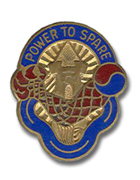 59th Ordnance Brigade DI 59th Ordnance Brigade DI |
|||||||||||||||||||||||||||||||||||||||||||||||||||||||||||||||||||||||||||||||||||||||||||||||||||||||||||||||||||||||||||||||||||||||||||||||||||||||||||||||||||||||||||||||||||||||||||||||||||||||||||||||||||||
|
|||||||||||||||||||||||||||||||||||||||||||||||||||||||||||||||||||||||||||||||||||||||||||||||||||||||||||||||||||||||||||||||||||||||||||||||||||||||||||||||||||||||||||||||||||||||||||||||||||||||||||||||||||||
|
(Source: A Look Back ... at the 59th Ordnance Brigade. Final issue of the 59th COURIER, the command newspaper, published in 1992.)
|
|||||||||||||||||||||||||||||||||||||||||||||||||||||||||||||||||||||||||||||||||||||||||||||||||||||||||||||||||||||||||||||||||||||||||||||||||||||||||||||||||||||||||||||||||||||||||||||||||||||||||||||||||||||
| 59th Ordnance Brigade: One for history books. | |||||||||||||||||||||||||||||||||||||||||||||||||||||||||||||||||||||||||||||||||||||||||||||||||||||||||||||||||||||||||||||||||||||||||||||||||||||||||||||||||||||||||||||||||||||||||||||||||||||||||||||||||||||
|
|||||||||||||||||||||||||||||||||||||||||||||||||||||||||||||||||||||||||||||||||||||||||||||||||||||||||||||||||||||||||||||||||||||||||||||||||||||||||||||||||||||||||||||||||||||||||||||||||||||||||||||||||||||
|
|||||||||||||||||||||||||||||||||||||||||||||||||||||||||||||||||||||||||||||||||||||||||||||||||||||||||||||||||||||||||||||||||||||||||||||||||||||||||||||||||||||||||||||||||||||||||||||||||||||||||||||||||||||
| (Source: ARMY LOGISTICIAN, Jan-Feb 1973) | |||||||||||||||||||||||||||||||||||||||||||||||||||||||||||||||||||||||||||||||||||||||||||||||||||||||||||||||||||||||||||||||||||||||||||||||||||||||||||||||||||||||||||||||||||||||||||||||||||||||||||||||||||||
| The merger of the Advanced Weapons Support Command and the Special Ammunition Support Command was expected to ultimately result in a savings of approximately 200 military manpower spaces. | |||||||||||||||||||||||||||||||||||||||||||||||||||||||||||||||||||||||||||||||||||||||||||||||||||||||||||||||||||||||||||||||||||||||||||||||||||||||||||||||||||||||||||||||||||||||||||||||||||||||||||||||||||||
| (Source: USAREUR/Seventh Army STATION LIST, 1 June 1976) | |||||||||||||||||||||||||||||||||||||||||||||||||||||||||||||||||||||||||||||||||||||||||||||||||||||||||||||||||||||||||||||||||||||||||||||||||||||||||||||||||||||||||||||||||||||||||||||||||||||||||||||||||||||
| 59th ORD AMMO GP ORGANIZATION - 1 JUNE 1976 | |||||||||||||||||||||||||||||||||||||||||||||||||||||||||||||||||||||||||||||||||||||||||||||||||||||||||||||||||||||||||||||||||||||||||||||||||||||||||||||||||||||||||||||||||||||||||||||||||||||||||||||||||||||
|
|||||||||||||||||||||||||||||||||||||||||||||||||||||||||||||||||||||||||||||||||||||||||||||||||||||||||||||||||||||||||||||||||||||||||||||||||||||||||||||||||||||||||||||||||||||||||||||||||||||||||||||||||||||
| 1967 | |||||||||||||||||||||||||||||||||||||||||||||||||||||||||||||||||||||||||||||||||||||||||||||||||||||||||||||||||||||||||||||||||||||||||||||||||||||||||||||||||||||||||||||||||||||||||||||||||||||||||||||||||||||
| Headquarters, Advanced Weapons Support Command | |||||||||||||||||||||||||||||||||||||||||||||||||||||||||||||||||||||||||||||||||||||||||||||||||||||||||||||||||||||||||||||||||||||||||||||||||||||||||||||||||||||||||||||||||||||||||||||||||||||||||||||||||||||
| (Source: Al Galbraith, served with HHQ Co, 59th Ordnance Group - a.k.a AWSCOM, 1967-68) | |||||||||||||||||||||||||||||||||||||||||||||||||||||||||||||||||||||||||||||||||||||||||||||||||||||||||||||||||||||||||||||||||||||||||||||||||||||||||||||||||||||||||||||||||||||||||||||||||||||||||||||||||||||
| Webmaster Note: I mistakenly identified the above building (photo #3 and #4) as Bldg 4611. Al says it was and is Bldg 4618. | |||||||||||||||||||||||||||||||||||||||||||||||||||||||||||||||||||||||||||||||||||||||||||||||||||||||||||||||||||||||||||||||||||||||||||||||||||||||||||||||||||||||||||||||||||||||||||||||||||||||||||||||||||||
|
|
|||||||||||||||||||||||||||||||||||||||||||||||||||||||||||||||||||||||||||||||||||||||||||||||||||||||||||||||||||||||||||||||||||||||||||||||||||||||||||||||||||||||||||||||||||||||||||||||||||||||||||||||||||||
| (Source: Clem Akins, 529th Ord Co, 1966-67 and 1971-73; 64th Ord Co, 1967-69 and 1973-75) | |||||||||||||||||||||||||||||||||||||||||||||||||||||||||||||||||||||||||||||||||||||||||||||||||||||||||||||||||||||||||||||||||||||||||||||||||||||||||||||||||||||||||||||||||||||||||||||||||||||||||||||||||||||
| Found your article on the Ordnance Companies interesting but lacking when it came to the special weapons units. Here is some information on the SW units in Europe when I was there. Took me a while to find where I had put this stuff. The 529th Ord Co was a general support/depot company for most of the Theater. It was located in a cave complex in a small valley near the town of Masswieler a few minutes drive from Pirmasens. The cave complex was built and used by the Germans in WWII and still had the Eagles over the doors. I was there from Dec 66 till Sep 67 and again from Oct 71 till Nov 72 when they closed the unit. The 529th was under AWSCOM (Advanced Weapons Support Command) located in Pirmasens. The 529th had most of the load test mission for the theater and was a parts depot for SW test and handling equipment. We had one MP company collocated with us for security. I was stationed at the 64th Ord Co at Fischbach from Sep 67 to May 69 and again from Oct 73 to Aug 75. During the 67-69 time there was a Sergeant GS Company (575th Ord Co) I think and two MP companies (193rd & 564th ?) that were assigned to the depot. The 64th was a SW GS Company for the southern half of Europe, the 9th Ord Co having the other half. The 64th had a mission for all SW, rocket motor support for Nike Herk and a full load 8” mission for the SW rounds. There were no extra facilities located at Fischbach so all traveled to Pirmasens for their needs, Commissary, PX, Gym, & clubs. The 64th was a stockpile site and the storage platoon had over 100 people assigned. MAJ Ron Finkbiener was the commander during the 73-75 time frame. The 197th Ord Bn was created about Nov 72 and was located at Fischbach and had control over the 64th and 525th Ord Co. The commander was LTC Lynn Stevens. By this time the 575th Ord Co was gone. |
|||||||||||||||||||||||||||||||||||||||||||||||||||||||||||||||||||||||||||||||||||||||||||||||||||||||||||||||||||||||||||||||||||||||||||||||||||||||||||||||||||||||||||||||||||||||||||||||||||||||||||||||||||||
| (Source: Email from Ron Youngman, HQ AWSCOM, 1966-1969) | |||||||||||||||||||||||||||||||||||||||||||||||||||||||||||||||||||||||||||||||||||||||||||||||||||||||||||||||||||||||||||||||||||||||||||||||||||||||||||||||||||||||||||||||||||||||||||||||||||||||||||||||||||||
| I was in the Surety Division of AWSCOM Headquarters in Pirmasens from 1966-1969. I was a Spec 5. We prepared all the maintenance instructions for several nuclear warheads, i.e Nike, Honest John, Sergeant, Pershing and 155. We had nine ordnance units under our command which we were responsible for. The headquarters Advanced Weapons Support Command was also was responsible for the transport of the weapons to Germany through different means. We also had sites in France and Italy. The 32 (Webmaster note: should be 22nd?) Aviation Detachment across the street was responsible for the deliver units. I was assigned to the HHC 59 Ordnance Group which was next doors to the headquarters building. Buildings were used by the German SS elites during WWII. Our section chief was a LTC and I worked with a CPT, Two senior NCO's one an E-7 and one a E-8. Also worked with 6 chief warrant officers. Good job and personnel to work with. Seems like yesterday but I left Pirmasens in March of 1969. Several personnel were sent to Vietnam from our unit. A list came out every month. There was the 97th Engineer Battalion on base and the the whole unit was sent to Vietnam. There one day and gone the next morning. I remember the good NCO club we had and off base beer and sandwich shops. I traveled all over Europe to places I was allowed to go to. There were places I could not go to because of my security clearance. |
|||||||||||||||||||||||||||||||||||||||||||||||||||||||||||||||||||||||||||||||||||||||||||||||||||||||||||||||||||||||||||||||||||||||||||||||||||||||||||||||||||||||||||||||||||||||||||||||||||||||||||||||||||||
| 1980 | |||||||||||||||||||||||||||||||||||||||||||||||||||||||||||||||||||||||||||||||||||||||||||||||||||||||||||||||||||||||||||||||||||||||||||||||||||||||||||||||||||||||||||||||||||||||||||||||||||||||||||||||||||||
| (Source: Email from James Sisk) | |||||||||||||||||||||||||||||||||||||||||||||||||||||||||||||||||||||||||||||||||||||||||||||||||||||||||||||||||||||||||||||||||||||||||||||||||||||||||||||||||||||||||||||||||||||||||||||||||||||||||||||||||||||
| I liked your website on the 59th Ordnance Brigade (USAREUR) and wanted to pass on the following information: I was assigned to units in the 59th Ord Bde for eight years. 1980-1983 (545th Ord Co in Muenster-Dieburg) as Support Plt Ldr, Storage & Issue Plt Ldr, and Operations Officer. We supported V Corps artillery units and some ADM Engineer units. This unit had the unique General Defensive Position (GDP) in the famous "Fulda Gap" where Warsaw Pact forces were expected to be heaviest. Most intelligence scenarios didn't give us much chance of any survival if total war broke out. The actual locations I'm sure, by now, are declassified and were around the town of Schlitz. This was a large unit with over 40 5-ton trucks dedicated to moving inventory and many more vehicles in support roles. The 6th MP Co provided physical security (to include both patrol & sentry military working dogs directly around the storage site. There were also some German para-military dog patrols that kept civilians away from the very outer perimeter fence of the depot (kaserne)). The storage site was well hidden in the middle of the forest; but was so lit up at night that commercial airline pilots purportedly used it for navigation to/from Frankfurt International Airport. The depot was converted to commercial businesses in the early 1990's. 1985-1987 (99th Ord Det in Flensburg) as Commanding Officer. We supported LANDJUT forces (650 Rocket Artillery Bn (Lance) and the 5th Panzer Grenadier Divisional arty (8" & 155mm). The storage site was near the village of Meyn. We had excellent relations both with the local civilian community and our German Army hosts. The 611th Nachschub Company (logistics) provided all our transportation and bivouac support. US military support for us was out of Bremerhaven. From the 294th USAAG other north European American units were supported. These included a "listening post" intel unit with several translators that picked up Warsaw Pact communications; veternarian inspectors who worked mainly in Denmark (lots of poultry & dairy for all of USAREUR came from there); and some joint US personnel who worked with NATO (e.g. there was a German Naval School in Murwick). The non-custodial units (75th & 13th FA Dets) worked very closely with their German counterparts. The 99th Ord Det had interior custodial control of the storage site and the two German units noted above by number provided external security. The storage site was noted as the most technologically advanced & secure site in the entire 59th Ord Bde. Both myself and Hauptmann Axel Lowe (German storage site commander) were given a special medal by the brigade commander for our securty initiatives in 1987. The site is now abandoned and parts of it are used as a pig farm. 1987-1989 (59th Ord Bde in Pirmasens) as Brigade Surety Evaluation Team Captain. The BSE teams visited every brigade unit right before their special inspections to ensure compliance & readiness. Sometimes we would "troubleshoot" sensitive issues for the brigade commander. Frank Dyer was on my team and was the US Army's first Master Warrant Officer (MW5). Teams were comprised of an officer, several spec wpns warrant officers, and a MP physical security expert. Sometimes a medical records specialist was used for the Personnel Reliability Program (PRP) review. The brigade commander used his BSE teams to decrease the number of failing or negative findings from USAREUR or DOD inspections of subordinate units. The teams would review everything (including: tie down procedures, emergency destruction, war plans, personnel records, maintenance, convoys, support unit relations, security, documentation, etc.) 1989-1990 (197th Ord Bn in Muenchweiler) as Material Officer (MATO). The unit supported VII Corps Artillery and had a minor role with Clausen. The custodial unit (64th Ord Co) was located in Fischbach very near the French border and the road to the storage site was known as "Thunder Road" since it was dangerously curvy and often icy. The MATO was the technical "eyes & ears" of the battalion commander and served as liaison on all classified matters with supported units and brigade headquarters. |
|||||||||||||||||||||||||||||||||||||||||||||||||||||||||||||||||||||||||||||||||||||||||||||||||||||||||||||||||||||||||||||||||||||||||||||||||||||||||||||||||||||||||||||||||||||||||||||||||||||||||||||||||||||
| 1982 | |||||||||||||||||||||||||||||||||||||||||||||||||||||||||||||||||||||||||||||||||||||||||||||||||||||||||||||||||||||||||||||||||||||||||||||||||||||||||||||||||||||||||||||||||||||||||||||||||||||||||||||||||||||
| (Source: Email from Bob Eccles) | |||||||||||||||||||||||||||||||||||||||||||||||||||||||||||||||||||||||||||||||||||||||||||||||||||||||||||||||||||||||||||||||||||||||||||||||||||||||||||||||||||||||||||||||||||||||||||||||||||||||||||||||||||||
| I joined the Army in January of 1982. I served in the 59th Ordnance Brigade from roughly April of 1982 to January of 1985. I started out with the 164th Military Police Company based at Miesau Army Depot, where I performed nuclear physical security duties. I am proud to have participated in a couple of events of historical note, specifically securing Pershing Two missiles arriving at Ramstein AFB, and what I believe was the first land convoy of nuclear weapons in Germany since the 1950's. The second half of my time with the 59th was spent as the driver for the Commanding General, BG Harry Walker. I drove the Commanding General and Command Sergeant Major in an unmarked Mercedes sedan, following the convoy vehicles. We spent a lot of time in the armor-plated and bullet-proof BMW 733-i criss-crossing Germany (West Germany, at the time) and Belgium visiting units of the 59th. On our way back to Brigade headquarters in Pirmasens, we listened as local radio newscasters reported the convoy. Our CSM spoke fluent German, so he could translate what was being said. Transporting nukes around Germany (and occasionally Belgium) was pretty interesting by helicopter, too. We flew around in "Chinook" helicopters. I remember once we had to land in a field in the middle of the German countryside, and rushed out and set up a perimiter around the chopper. I overheard the pilot say that he had lost hydrolic pressure. Kinda scary! Bob Eccles ADDITIONAL INFORMATION (Source: David N.) I can relate to this event (reported in Bob Eccles' email above) as I was the Senior Courier Officer on one of the "Air Missions" that the Auxillery Power Unit (APU) went out. The crew chief was on a short ladder with a freshly opened can of hydralic fluid and was pouring it into someplace towards the rear mast inside of the CH 47C. We were carrying two warheads to be "Retrograded" and "demilled" (demilitarized). Two weapons guards were at the back of the helicopter with M16s, flak vests, and helmets. I was sitting at the troop commander's seat just behind the the copilot and the pilot. Through the headset that I was wearing I heard the pilot say, "aw shit, we're going down". They were both yanking on the cyclics. About that time we hit really hard. The next thing I know was the troop commander's seat folded from under me and I was on my back next to one of the warheads, my flak vest and helmet absorbed most of the impact of my back hitting the deck plate. My legs were tangled in the seat belt for where I was sitting. I almost swallowed the "Bubble Yum" bubble gum that I usually chewed while on "Air Missions". Hydralic fluid from the forward mast area was spraying on me. The pilot and copilot had already unassed the helicopter. Thinking that the helicopter would catch on fire or something I pulled out my Gerber Mark V Commando Knife and sliced the seat belt to untangle myself. Being 101st Air Assault trained at Fort Campbell, Kentucky, I checked to see if the master power switch was off. I made sure that I still had my .45 caliber pistol in my shoulder holster and picked up my M16, which had slid under one of the warhead containers (someone decided we had to carry our M16s, we usually only carried a .45 caliber pistol, M1911). I yanked the headset off and I headed towards the back of the "bird" (helicopter) after making sure that the warhead containers were not warm (a sign that the 300 pounds of High Explosives had ignited). I got to the two Warhead Guards and they were cussing and cursing. Prior to crashing the crew chief had let the "tail gate" down. They almost were thrown out on impact. After making sure that everything was not going to burn, I went outside and looked at the helicopter. We had landed in a newly plowed and fertilized farmer's field, what a nice smell (NOT). The helicopter was buried up to the side fuel pods. After a while the pilot and copilot reestablished communications with the other helicopters. As the Senior Courier Officer, the decision was made to deploy a security perimeter from the Guard Force "Bird" ( a Military Police Physical Security Platoon) per SOP (Standard Operating Procedures) around the crashed "Mission Bird". Something not SOP was that we would use their CH 47C as the "Mission Bird" after we "transloaded" the two warheads "tailgate to tailgate". This would "strand" the Guard Force. The Alternate "Mission Bird" was already on the way, but had a way to go, to get to us. The "tailgate to tailgate transload" went off without a hitch and we were on our way, minus the Guard Force. We landed at the "hotpad" and the warheads were off loaded, forklifted to vehicles (M818s), tiedown, covered with a tarp, and signed for from me to the next officer. Their Guard Force had to remain in place, since ours was still in the air enroute to this location. As soon as the other officer signed for the weapons on the Receipt, I was out of there. We boarded the helicopter and radioed the Guard Force to abort and go back to home station. We landed at out poinr of departure and returned to our units. About an hour later the alternate "Mission Bird" dropped off the Guard Force. We went through our routine of the cleaning and turn in of our M1911s, M16s, M203s, M60s, and ammunition. One of the new MP's asked me, "Sir, does this happen all the time". I smiled and said, "Yeah, sure all the time". He thought that I was serious and his face turned into panic and he rapidly walked off. A few days later I had to go to the Medical Clinic because my back was hurting and I could barely get out of my car. I was given a bunch of pain pills and told that the back pain was from muscle spasms. I had to DX (Direct Exchange) my hydralic fluid soaked Flak Vest. Eventually, the pain went away, while I was still doing the "Missions". All the "Missions" came out to over 133, with three crashes ( that I walked away from). I kept copies of all the Receipts that Transfered the xxxxx Weapons to the other units so that if one of them came up missing I could prove that I didn't lose the xxxxx Weapons. That is how I know how many "Air Missions" that I went on. I carried my Gerber Knife on all "Air Missions" after having to cut my self loose from the seat belt. I was glad that these were warheads that were being "Retrograded", after they were delivered the gaining unit only "popped" the containers to visually check the xxxxx Warhead, and a "Broken Arrow" Report was not required. I didn't want my Name, Rank, and Social Security Number on a Broken Arrow Report at the Joint Chiefs of Staff. A few months later after doing some other "Missions" one of the CH 47Cs that we had been riding in the day before had a catastrophe transmission failure and fell apart over the autobahn. |
|||||||||||||||||||||||||||||||||||||||||||||||||||||||||||||||||||||||||||||||||||||||||||||||||||||||||||||||||||||||||||||||||||||||||||||||||||||||||||||||||||||||||||||||||||||||||||||||||||||||||||||||||||||
| 1985 | |||||||||||||||||||||||||||||||||||||||||||||||||||||||||||||||||||||||||||||||||||||||||||||||||||||||||||||||||||||||||||||||||||||||||||||||||||||||||||||||||||||||||||||||||||||||||||||||||||||||||||||||||||||
| (Source: Joe Luongo, 59th Ord Bde, 1985-88) | |||||||||||||||||||||||||||||||||||||||||||||||||||||||||||||||||||||||||||||||||||||||||||||||||||||||||||||||||||||||||||||||||||||||||||||||||||||||||||||||||||||||||||||||||||||||||||||||||||||||||||||||||||||
| I was assigned
to the 59th Ord Bde from Dec 1985 to Nov 1988. I started at the Bde
staff in the Office of the Assistant Chief of Staff for Surety. I
was a physical security inspector. I inspected sites all over the
Bde. I went from Flensburg in the north to Füssen in the south.
Some of the units that I remember inspecting are the 162nd OD CO,
the 74th USAFAD, the 510th OD CO, the 619th OD CO and the 1st USAFAD.
There were alot more but those are the one's I remember most. After 6 months on the surety team and being TDY 3 weeks of the month I took command of the 164th MP CO at Miesau in July of 1986. The 164th was then part of the 3rd OD BN that was headquartered in Pirmasens. The 164th was the biggest MP CO in USAREUR. We had a authorized strength of 284 soldiers. We secured one of the largest nuclear storage sites in Europe. We provided security for air missions all over West Germany. Between air missions, inspections, demos for visiting VIPs and the day to day mission it never stopped. It was a tough command and pretty stressful but it was the highlight of my career. Nothing I did before or after has equaled it. I was very lucky I had great soldiers who always accomplished the mission no matter how bad things got. After 21 month of command I went to the 3rd ORD to be the S-2. I retired in 1996 and was called back to active duty in 2002. I often run into people who served in the 59th. And its alway fun to listen to the stories. Everyone always agrees that there was not doubt what your mission was. Hopefully there will be more comments from other people Joe Luongo |
|||||||||||||||||||||||||||||||||||||||||||||||||||||||||||||||||||||||||||||||||||||||||||||||||||||||||||||||||||||||||||||||||||||||||||||||||||||||||||||||||||||||||||||||||||||||||||||||||||||||||||||||||||||
| If you have more
information on the history or organization of the 59th Ord Bde, please
contact me |
|||||||||||||||||||||||||||||||||||||||||||||||||||||||||||||||||||||||||||||||||||||||||||||||||||||||||||||||||||||||||||||||||||||||||||||||||||||||||||||||||||||||||||||||||||||||||||||||||||||||||||||||||||||
|
|
|||||||||||||||||||||||||||||||||||||||||||||||||||||||||||||||||||||||||||||||||||||||||||||||||||||||||||||||||||||||||||||||||||||||||||||||||||||||||||||||||||||||||||||||||||||||||||||||||||||||||||||||||||||
|
(Source: A Look Back ... at the 59th Ordnance Brigade. Final issue of the 59th COURIER, the command newspaper, published in 1992.)
|
|||||||||||||||||||||||||||||||||||||||||||||||||||||||||||||||||||||||||||||||||||||||||||||||||||||||||||||||||||||||||||||||||||||||||||||||||||||||||||||||||||||||||||||||||||||||||||||||||||||||||||||||||||||
| 59th's role in NATO. | |||||||||||||||||||||||||||||||||||||||||||||||||||||||||||||||||||||||||||||||||||||||||||||||||||||||||||||||||||||||||||||||||||||||||||||||||||||||||||||||||||||||||||||||||||||||||||||||||||||||||||||||||||||
|
|||||||||||||||||||||||||||||||||||||||||||||||||||||||||||||||||||||||||||||||||||||||||||||||||||||||||||||||||||||||||||||||||||||||||||||||||||||||||||||||||||||||||||||||||||||||||||||||||||||||||||||||||||||
|
|
|||||||||||||||||||||||||||||||||||||||||||||||||||||||||||||||||||||||||||||||||||||||||||||||||||||||||||||||||||||||||||||||||||||||||||||||||||||||||||||||||||||||||||||||||||||||||||||||||||||||||||||||||||||
|
(Source: A Look Back ... at the 59th Ordnance Brigade. Final issue of the 59th COURIER, the command newspaper, published in 1992.)
|
|||||||||||||||||||||||||||||||||||||||||||||||||||||||||||||||||||||||||||||||||||||||||||||||||||||||||||||||||||||||||||||||||||||||||||||||||||||||||||||||||||||||||||||||||||||||||||||||||||||||||||||||||||||
| Headquarters Support Battalion | |||||||||||||||||||||||||||||||||||||||||||||||||||||||||||||||||||||||||||||||||||||||||||||||||||||||||||||||||||||||||||||||||||||||||||||||||||||||||||||||||||||||||||||||||||||||||||||||||||||||||||||||||||||
|
|||||||||||||||||||||||||||||||||||||||||||||||||||||||||||||||||||||||||||||||||||||||||||||||||||||||||||||||||||||||||||||||||||||||||||||||||||||||||||||||||||||||||||||||||||||||||||||||||||||||||||||||||||||
|
|||||||||||||||||||||||||||||||||||||||||||||||||||||||||||||||||||||||||||||||||||||||||||||||||||||||||||||||||||||||||||||||||||||||||||||||||||||||||||||||||||||||||||||||||||||||||||||||||||||||||||||||||||||
| (Source: Email from Thomas S. Schorr, Jr., last commander of HHC, 59th Ord Bde) | |||||||||||||||||||||||||||||||||||||||||||||||||||||||||||||||||||||||||||||||||||||||||||||||||||||||||||||||||||||||||||||||||||||||||||||||||||||||||||||||||||||||||||||||||||||||||||||||||||||||||||||||||||||
| I just found the website for the 59th while researching other topics. Of course your site side tracked me for a little while. I was the last commander of HHC 59 OD Bde and the very last person to sign out of the brigade on 30 Sep 92 after the official inactivation. I had to sign out of 196th OD Bn located right across the street. Lots of memories, seen lots of former 59 OD soldiers, and we all had good memories … though I think we seem to have remembered the best of our experiences. I still have the sign from HHC 59 OD Bde after I discovered that the installation was just going to turn it into scrap metal. 1SG Mark Hole was the last 1SG of HHC. Great guy who went on to make CSM. It could not have happened to a better NCO. My XO, 1LT Bruce Tharpe, ETS'd service and went to Penn State to get his Masters in Engineering. Last thing I got from him was that he was enjoying school and in the process of setting up his own engineering firm. I'm sure by now that he must have the corner on any kind of engineering needs on the East Coast. In the final months of 59th OD Bde and HHC, we blossomed from the normal 400 soldiers to over 700 soldiers as units went out of business to meet President Bush's mandate to eliminate all tactical special weapons in Europe. All of the special T&H gear was turned in to the supply section which was headed by 1LT Zulma Guerrero, now LTC and serving in the 19th ESC, Daegu Korea. She is going very well. I expect her to pick up a BN Command and pin on COL. We also served together in CFLCC on the G4 staff. I've had a pretty good career and ended up with 7 commands. I still think that LTC John Nyere was the best boss that I ever had. He was always even keeled and let me run to the end of my rope before interjecting his thoughts on what he thought I should be doing. His examples have guided me through my entire career and I've been pretty successful. Every new company commander should have a boss like him to guide them through their commands. When I rotated into every command I use the same words that he told me right before my HHC 59 COC. I was really nervous and had no idea of what to right for a COC speech. I spent the better part of two evenings at home thinking up stuff of what I wanted to do and we would be a great unit. As I'm standing in the side of the gym waiting for our cue to go out the podium to begin the COC he looks at me, notices that I'm looking through about 5 pages of speech and simply says to me, "Son, keep it short, you haven't done anything yet". I shortened my speech to, I'm proud to be selected for command and essentially I'll do the best I can. Every soldier was relieved after the outgoing commander went on for what seemed like an eternity. By the way, another person out of the PAL Detachment, COL Patrick Harris, is now in the Army War College and will graduate this summer. Amazing how well all of us that were assigned to the Brigade have done. |
|||||||||||||||||||||||||||||||||||||||||||||||||||||||||||||||||||||||||||||||||||||||||||||||||||||||||||||||||||||||||||||||||||||||||||||||||||||||||||||||||||||||||||||||||||||||||||||||||||||||||||||||||||||
|
|
|||||||||||||||||||||||||||||||||||||||||||||||||||||||||||||||||||||||||||||||||||||||||||||||||||||||||||||||||||||||||||||||||||||||||||||||||||||||||||||||||||||||||||||||||||||||||||||||||||||||||||||||||||||
|
(Source: Welcome to the 59th Ordnance Brigade, 59th Ord Bde special orientation brochure, no date (probably 1982))
|
|||||||||||||||||||||||||||||||||||||||||||||||||||||||||||||||||||||||||||||||||||||||||||||||||||||||||||||||||||||||||||||||||||||||||||||||||||||||||||||||||||||||||||||||||||||||||||||||||||||||||||||||||||||
| 3rd Ordnance Battalion | |||||||||||||||||||||||||||||||||||||||||||||||||||||||||||||||||||||||||||||||||||||||||||||||||||||||||||||||||||||||||||||||||||||||||||||||||||||||||||||||||||||||||||||||||||||||||||||||||||||||||||||||||||||
|
|||||||||||||||||||||||||||||||||||||||||||||||||||||||||||||||||||||||||||||||||||||||||||||||||||||||||||||||||||||||||||||||||||||||||||||||||||||||||||||||||||||||||||||||||||||||||||||||||||||||||||||||||||||
|
|
|||||||||||||||||||||||||||||||||||||||||||||||||||||||||||||||||||||||||||||||||||||||||||||||||||||||||||||||||||||||||||||||||||||||||||||||||||||||||||||||||||||||||||||||||||||||||||||||||||||||||||||||||||||
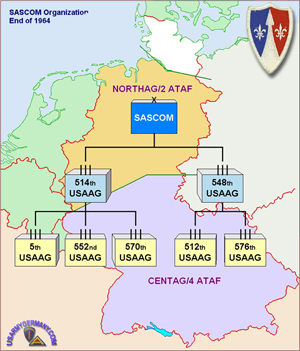 SASCOM Organization late 1964 |
|||||||||||||||||||||||||||||||||||||||||||||||||||||||||||||||||||||||||||||||||||||||||||||||||||||||||||||||||||||||||||||||||||||||||||||||||||||||||||||||||||||||||||||||||||||||||||||||||||||||||||||||||||||
(Source: A Look Back ... at the 59th Ordnance Brigade. Final issue of the 59th COURIER, the command newspaper, published in 1992.) |
|||||||||||||||||||||||||||||||||||||||||||||||||||||||||||||||||||||||||||||||||||||||||||||||||||||||||||||||||||||||||||||||||||||||||||||||||||||||||||||||||||||||||||||||||||||||||||||||||||||||||||||||||||||
| 514th US Army Artillery Group | |||||||||||||||||||||||||||||||||||||||||||||||||||||||||||||||||||||||||||||||||||||||||||||||||||||||||||||||||||||||||||||||||||||||||||||||||||||||||||||||||||||||||||||||||||||||||||||||||||||||||||||||||||||
|
|||||||||||||||||||||||||||||||||||||||||||||||||||||||||||||||||||||||||||||||||||||||||||||||||||||||||||||||||||||||||||||||||||||||||||||||||||||||||||||||||||||||||||||||||||||||||||||||||||||||||||||||||||||
| The 514th arrived in Europe in October 1944 and received credit for participating in four campaigns. In August 1945, the 514th returned to the United States where it was inactivated in February 1946. In September 1948, the 514th Battalion was redesignated as the 958th Field Artillery Rocket Battalion and allotted to the Organized Reserve Corps. The battalion was active from September 1948 through August 1950 at Fresno, Calif. In March 1952, the 958th Field Artillery Rocket Battalion was redesignated as the 514th Field Artillery Battalion and it was allotted to to the Regular Army later that year. Headquarters and Headquarters Battery, 514th Field Artillery Battalion, was redesignated as Headquarters and Headquarters Detachment, 514th US Army Field Artillery Group in May 1961. Headquarters and Headquarters Detachment, 514th US Army Artillery Group was activated in Germany and stationed at Mönchengladbach in December 1961. The Group was subordinate to the Special Ammunition Support Command. The 514th Group's mission was to implement the SASCOM Special Ammunition Support Program in cooperation with the Northern Army Group (NORTHAG) and Second Allied Tactical Air Force (2ATAF). With the merger of SASCOM and AWSCOM in October 1972, the 514th USAAG was deactivated. The personnel and spaces made available from the deactivation were used to establish the 59th Ordnance Group Staff Element at NORTHAG. The staff element at NORTHAG was inactivated in April 1992. |
|||||||||||||||||||||||||||||||||||||||||||||||||||||||||||||||||||||||||||||||||||||||||||||||||||||||||||||||||||||||||||||||||||||||||||||||||||||||||||||||||||||||||||||||||||||||||||||||||||||||||||||||||||||
|
|
|||||||||||||||||||||||||||||||||||||||||||||||||||||||||||||||||||||||||||||||||||||||||||||||||||||||||||||||||||||||||||||||||||||||||||||||||||||||||||||||||||||||||||||||||||||||||||||||||||||||||||||||||||||
|
(Source: A Look Back ... at the 59th Ordnance Brigade. Final issue of the 59th COURIER, the command newspaper, published in 1992.)
|
|||||||||||||||||||||||||||||||||||||||||||||||||||||||||||||||||||||||||||||||||||||||||||||||||||||||||||||||||||||||||||||||||||||||||||||||||||||||||||||||||||||||||||||||||||||||||||||||||||||||||||||||||||||
| 548th US Army Artillery Group | |||||||||||||||||||||||||||||||||||||||||||||||||||||||||||||||||||||||||||||||||||||||||||||||||||||||||||||||||||||||||||||||||||||||||||||||||||||||||||||||||||||||||||||||||||||||||||||||||||||||||||||||||||||
|
|||||||||||||||||||||||||||||||||||||||||||||||||||||||||||||||||||||||||||||||||||||||||||||||||||||||||||||||||||||||||||||||||||||||||||||||||||||||||||||||||||||||||||||||||||||||||||||||||||||||||||||||||||||
| In October 1961, Headquarters and Headquarters Detachment, 548th US Army Artillery Group was (officially) activated and assigned to SASCOM. In April 1962, the group was further attached to the US Army Element (Support Command), Headquarters, Central Army Group (CENTAG). Consurrently, the 548th Headquarters and Headquarters Detachment moved to Seckenheim (Hammonds Barracks). With the merger of SASCOM and AWSCOM in October 1972, the 548th USAAG was inactivated and its subordinate groups assigned directly under the new 59th Ordnance Group. The liaison role performed by Hqs 548th became the responsibility of the 59th Ord Gp Staff Element at CENTAG which was composed of spaces from the 548th. The staff element at CENTAG was inactivated in June 1992. |
|||||||||||||||||||||||||||||||||||||||||||||||||||||||||||||||||||||||||||||||||||||||||||||||||||||||||||||||||||||||||||||||||||||||||||||||||||||||||||||||||||||||||||||||||||||||||||||||||||||||||||||||||||||
| Webmaster Note: According to some information I found some time ago, HHD, 548th USAAG was originally located at Lüdenscheid, Germany, a small town northeast of Köln (Cologne). Can anyone confirm and provide details? | |||||||||||||||||||||||||||||||||||||||||||||||||||||||||||||||||||||||||||||||||||||||||||||||||||||||||||||||||||||||||||||||||||||||||||||||||||||||||||||||||||||||||||||||||||||||||||||||||||||||||||||||||||||
|
|
|||||||||||||||||||||||||||||||||||||||||||||||||||||||||||||||||||||||||||||||||||||||||||||||||||||||||||||||||||||||||||||||||||||||||||||||||||||||||||||||||||||||||||||||||||||||||||||||||||||||||||||||||||||
| 165th Signal Company | |||||||||||||||||||||||||||||||||||||||||||||||||||||||||||||||||||||||||||||||||||||||||||||||||||||||||||||||||||||||||||||||||||||||||||||||||||||||||||||||||||||||||||||||||||||||||||||||||||||||||||||||||||||
| 1975 | |||||||||||||||||||||||||||||||||||||||||||||||||||||||||||||||||||||||||||||||||||||||||||||||||||||||||||||||||||||||||||||||||||||||||||||||||||||||||||||||||||||||||||||||||||||||||||||||||||||||||||||||||||||
| (Source: Email from Carl F. House) | |||||||||||||||||||||||||||||||||||||||||||||||||||||||||||||||||||||||||||||||||||||||||||||||||||||||||||||||||||||||||||||||||||||||||||||||||||||||||||||||||||||||||||||||||||||||||||||||||||||||||||||||||||||
| The 165th Signal Company was formed out of the maintenance and signal platoons of HHC 59th ORD GP (SASCOM). Stand up date was on or about 21 Sep 1975. The Company was commanded by CPT John G. Tesmer (sp?). I was transferred to the 165th with no movement involved from HHC 59th on the date I provided (21 Sep 1975). The 59th, 22nd Avn and 165th shared the same motor pool. I was also assigned to 1/54 Inf, Bamberg, 1979-1982; and 7th Army CATC, Vilseck 1984-1987. |
|||||||||||||||||||||||||||||||||||||||||||||||||||||||||||||||||||||||||||||||||||||||||||||||||||||||||||||||||||||||||||||||||||||||||||||||||||||||||||||||||||||||||||||||||||||||||||||||||||||||||||||||||||||
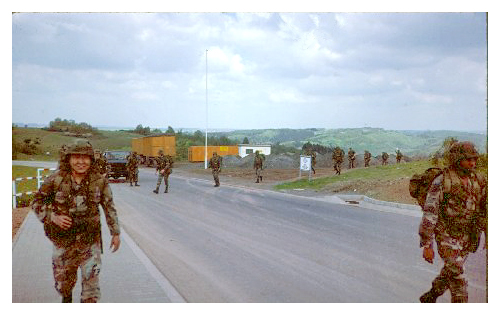 |
|||||||||||||||||||||||||||||||||||||||||||||||||||||||||||||||||||||||||||||||||||||||||||||||||||||||||||||||||||||||||||||||||||||||||||||||||||||||||||||||||||||||||||||||||||||||||||||||||||||||||||||||||||||
| (Source: Email from Bruno Harmann) | |||||||||||||||||||||||||||||||||||||||||||||||||||||||||||||||||||||||||||||||||||||||||||||||||||||||||||||||||||||||||||||||||||||||||||||||||||||||||||||||||||||||||||||||||||||||||||||||||||||||||||||||||||||
|
|||||||||||||||||||||||||||||||||||||||||||||||||||||||||||||||||||||||||||||||||||||||||||||||||||||||||||||||||||||||||||||||||||||||||||||||||||||||||||||||||||||||||||||||||||||||||||||||||||||||||||||||||||||
| I am fluent in German so I often had to do "special" duties. In the 165'th I remember CO Captain Christopher Benoit. We'd be out in the woods sometimes and he would send us a pizza. I believe that was for Able Archer? I also remember a Captain Woodhouse in the 165th. I was also attached to the 267th Sig co. in Pirmasens and did work for them in the telephone office in the Banana building and Muenchweiler and Dahn and Fischbach. The woods out there were so beautiful. I am a rock climber so when I was off I would often take my POV and go climbing with some of the German civilians I met on the sandstone cliffs which were all over the place. I remember doing special duty driver for General Cunningham sometimes. |
|||||||||||||||||||||||||||||||||||||||||||||||||||||||||||||||||||||||||||||||||||||||||||||||||||||||||||||||||||||||||||||||||||||||||||||||||||||||||||||||||||||||||||||||||||||||||||||||||||||||||||||||||||||
| Permissive Action Link Detachment | |||||||||||||||||||||||||||||||||||||||||||||||||||||||||||||||||||||||||||||||||||||||||||||||||||||||||||||||||||||||||||||||||||||||||||||||||||||||||||||||||||||||||||||||||||||||||||||||||||||||||||||||||||||
| (Source: A Look Back ... at the 59th Ordnance Brigade. Final issue of the 59th COURIER, the command newspaper, published in 1992) | |||||||||||||||||||||||||||||||||||||||||||||||||||||||||||||||||||||||||||||||||||||||||||||||||||||||||||||||||||||||||||||||||||||||||||||||||||||||||||||||||||||||||||||||||||||||||||||||||||||||||||||||||||||
| Permissive Action Link In December 1963, the U.S. Army Permissive Action Link Detachment was organized and assigned to Headquarters, U.S. Army Materiel Command, Europe. The detachment was attached to the Advanced Weapons Support Command for administrative and logistical support. Prior to December 1963, the Army PAL Detachment had been known as the U.S. Army Control Detachment, the U.S. Army Surveillance Detachment, and the U.S. Army PAL Surveillance Detachment. In September 1970, the PAL Detachment was assigned to the U.S. Army Theater Support Command, Europe, and attached to AWSCOM. In July 1972, the PAL Detachment was placed under the operational control of the Deputy Chief of Staff for Operations, USAREUR, and in May 1974, it was reassigned to the 59th Ordnance Group (Special Ammunition Support Command). The Permissive Action Link Detachment was the only unit of its kind in the U.S. Army, consisting mainly of officers and noncommissioned officers. The PAL Detachment was inactivated in June 1992. |
|||||||||||||||||||||||||||||||||||||||||||||||||||||||||||||||||||||||||||||||||||||||||||||||||||||||||||||||||||||||||||||||||||||||||||||||||||||||||||||||||||||||||||||||||||||||||||||||||||||||||||||||||||||
| 1963 | |||||||||||||||||||||||||||||||||||||||||||||||||||||||||||||||||||||||||||||||||||||||||||||||||||||||||||||||||||||||||||||||||||||||||||||||||||||||||||||||||||||||||||||||||||||||||||||||||||||||||||||||||||||
| (Source: Email from Gary Smith, PAL Det, 1963-67) | |||||||||||||||||||||||||||||||||||||||||||||||||||||||||||||||||||||||||||||||||||||||||||||||||||||||||||||||||||||||||||||||||||||||||||||||||||||||||||||||||||||||||||||||||||||||||||||||||||||||||||||||||||||
I was assigned to the USA PAL Det (Permissive Action Link) from 1963 to 1967. The unit was organized to install the Permissive Action Link devices throughout the European Theater. The unit spent its time in the early stages testing the devices before the program was fully implemented and then traveled throughout the theater installing the devices. I was with the unit almost from its inception until the program was fully implemented.
Teams were composed of two commissioned officers and two non-commisioned officers, E-6 and above. Each team was composed of two sub teams, A and B, so that no one individual knew the entire code utilized. There was extensive travel throughout the theater during the implementation phase.
I’m sure you know what the Permissive Action Link is, it is fairly common knowledge now but at its inception the mission and everything about it was highly classified. I didn’t even tell my Dad what I did until a few years after I was out of the Army. As it was, the unit was almost the “president’s baby” and we got almost anything we wanted. The CO at the inception, a Major H. Eugene Kelson, took full advantage of this and we got many privileges and perks, such as a 6 day TDY trip to Paris to learn about NATO. Major (later Colonel) Kelson was a real character and I can remember on two occasions he almost got us arrested. For almost a year, the mission was not fully agreed on and we didn’t have a lot to do. There was a lot of pinochle and ping pong played but in the end this may have paid off, as the personnel became very close knit. Most of the young officers in the unit lived in BOQ’s in two army posts, one of which was half school teachers and one which was more than half nurses. We had a great group and we went on week end trips in small groups almost all over Germany. Munich and Garmisch-Partenkirchen were our favorites. At least a couple of marriages blossomed out of this close relationship but a lot of the relationships were more like brother and sister. A later phase of the mission involved tested of the devices and became very boring. Can you imagine eight hours a day opening combination locks over and over? There were quite a few failures in the early days and this testing phase stretched out for quite a long time, but the devices had to work flawlessly. Much of the early testing was at the 529th Ordnance Company in tunnels dug during the Second World War by the Germans |
|||||||||||||||||||||||||||||||||||||||||||||||||||||||||||||||||||||||||||||||||||||||||||||||||||||||||||||||||||||||||||||||||||||||||||||||||||||||||||||||||||||||||||||||||||||||||||||||||||||||||||||||||||||
| 1964 | |||||||||||||||||||||||||||||||||||||||||||||||||||||||||||||||||||||||||||||||||||||||||||||||||||||||||||||||||||||||||||||||||||||||||||||||||||||||||||||||||||||||||||||||||||||||||||||||||||||||||||||||||||||
| (Source: Email from William Howard) | |||||||||||||||||||||||||||||||||||||||||||||||||||||||||||||||||||||||||||||||||||||||||||||||||||||||||||||||||||||||||||||||||||||||||||||||||||||||||||||||||||||||||||||||||||||||||||||||||||||||||||||||||||||
I also was a member of the PAL Detachment. Arrived in Pirmasens on 29 Dec 1964 and was assigned to the PAL Detachment. We were a subordinate unit of USAREURCOMZ. While I was there we were not a part of the 59th Ord. Bde. |
|||||||||||||||||||||||||||||||||||||||||||||||||||||||||||||||||||||||||||||||||||||||||||||||||||||||||||||||||||||||||||||||||||||||||||||||||||||||||||||||||||||||||||||||||||||||||||||||||||||||||||||||||||||
| 1968 | |||||||||||||||||||||||||||||||||||||||||||||||||||||||||||||||||||||||||||||||||||||||||||||||||||||||||||||||||||||||||||||||||||||||||||||||||||||||||||||||||||||||||||||||||||||||||||||||||||||||||||||||||||||
| (Source: Email from Jack Vines) | |||||||||||||||||||||||||||||||||||||||||||||||||||||||||||||||||||||||||||||||||||||||||||||||||||||||||||||||||||||||||||||||||||||||||||||||||||||||||||||||||||||||||||||||||||||||||||||||||||||||||||||||||||||
In 1968 I was an Armor 2nd LT who went “vol-indef” (a third year obligation, minimum), asked for Germany and expected to be posted out on the Russian front in one of the Armored Calvary units. When I received orders to the USA PAL Detachment in Pirmasens, I couldn’t find anyone who had ever heard of it. |
|||||||||||||||||||||||||||||||||||||||||||||||||||||||||||||||||||||||||||||||||||||||||||||||||||||||||||||||||||||||||||||||||||||||||||||||||||||||||||||||||||||||||||||||||||||||||||||||||||||||||||||||||||||
| Warhead Custodial Detachments - 1960s | |||||||||||||||||||||||||||||||||||||||||||||||||||||||||||||||||||||||||||||||||||||||||||||||||||||||||||||||||||||||||||||||||||||||||||||||||||||||||||||||||||||||||||||||||||||||||||||||||||||||||||||||||||||
| (Source: Annual Historical Summary, USAREUR & Seventh Army, 1 Jan to 31 Dec 1966) | |||||||||||||||||||||||||||||||||||||||||||||||||||||||||||||||||||||||||||||||||||||||||||||||||||||||||||||||||||||||||||||||||||||||||||||||||||||||||||||||||||||||||||||||||||||||||||||||||||||||||||||||||||||
| TIMELINES (the following timeline is still in draft form - I am experimenting to find a good way to present the attachments/detachments of subordinate units and assignments of missions - and, yes, suggestions are welcome!) | |||||||||||||||||||||||||||||||||||||||||||||||||||||||||||||||||||||||||||||||||||||||||||||||||||||||||||||||||||||||||||||||||||||||||||||||||||||||||||||||||||||||||||||||||||||||||||||||||||||||||||||||||||||
|
|||||||||||||||||||||||||||||||||||||||||||||||||||||||||||||||||||||||||||||||||||||||||||||||||||||||||||||||||||||||||||||||||||||||||||||||||||||||||||||||||||||||||||||||||||||||||||||||||||||||||||||||||||||
|
|
|||||||||||||||||||||||||||||||||||||||||||||||||||||||||||||||||||||||||||||||||||||||||||||||||||||||||||||||||||||||||||||||||||||||||||||||||||||||||||||||||||||||||||||||||||||||||||||||||||||||||||||||||||||
| Warhead Custodial Detachments - early 1980s | |||||||||||||||||||||||||||||||||||||||||||||||||||||||||||||||||||||||||||||||||||||||||||||||||||||||||||||||||||||||||||||||||||||||||||||||||||||||||||||||||||||||||||||||||||||||||||||||||||||||||||||||||||||
| NORTHAG | |||||||||||||||||||||||||||||||||||||||||||||||||||||||||||||||||||||||||||||||||||||||||||||||||||||||||||||||||||||||||||||||||||||||||||||||||||||||||||||||||||||||||||||||||||||||||||||||||||||||||||||||||||||
|
|||||||||||||||||||||||||||||||||||||||||||||||||||||||||||||||||||||||||||||||||||||||||||||||||||||||||||||||||||||||||||||||||||||||||||||||||||||||||||||||||||||||||||||||||||||||||||||||||||||||||||||||||||||
|
|||||||||||||||||||||||||||||||||||||||||||||||||||||||||||||||||||||||||||||||||||||||||||||||||||||||||||||||||||||||||||||||||||||||||||||||||||||||||||||||||||||||||||||||||||||||||||||||||||||||||||||||||||||
| CENTAG | |||||||||||||||||||||||||||||||||||||||||||||||||||||||||||||||||||||||||||||||||||||||||||||||||||||||||||||||||||||||||||||||||||||||||||||||||||||||||||||||||||||||||||||||||||||||||||||||||||||||||||||||||||||
|
|||||||||||||||||||||||||||||||||||||||||||||||||||||||||||||||||||||||||||||||||||||||||||||||||||||||||||||||||||||||||||||||||||||||||||||||||||||||||||||||||||||||||||||||||||||||||||||||||||||||||||||||||||||
|
|||||||||||||||||||||||||||||||||||||||||||||||||||||||||||||||||||||||||||||||||||||||||||||||||||||||||||||||||||||||||||||||||||||||||||||||||||||||||||||||||||||||||||||||||||||||||||||||||||||||||||||||||||||
|
|
|||||||||||||||||||||||||||||||||||||||||||||||||||||||||||||||||||||||||||||||||||||||||||||||||||||||||||||||||||||||||||||||||||||||||||||||||||||||||||||||||||||||||||||||||||||||||||||||||||||||||||||||||||||
| Related Links: 570th USAAG - a comprehensive site that covers the special weapons support group and its subordinate warhead custodial detachments. 4th USAFAD - web site dedicated to those who served at the 4th USAFAD during the COLD WAR. 8th Missile Det (now inactive) - Edward Starks 27th Ordnance Company, Büren - great website hosted by a former member of the 27th Ord Co. The company supported 570th USAAG. 27th Ordnance Company Site Pluto - 69th Ordnance Company - a very interesting site hosted by John Myers that features Site Pluto, located at Longare, Italy, which was operated by the 69th Ord Co and used as a depot for atomic weapons in support of the 559th USAAG's mission in Italy. 81st USAFAD, Dülmen - Homepage of the Dülmen Warthogs! 84th USAFAD, Grossengstingen - nice page dedicated to the veterans who served with the 84th USAFAD at Grossengstingen, southern Germany. History of a Quick Reaction Alert site - Ochsenhof (German language only!) - site is hosted by Jörg Auernhammer, a former member of the 1st Flugkörperstaffel of FKG 1 at Saarburgkaserne, Landsberg/Lech, 1980s. This unit was supported by 74th USAFAD, 512th USAAG. Site contains a nice strip map of QRA Ochsenhof. 50 Missile Regiment - Excellent homepage of the British missile unit that was supported by the 69th USAFAD. Traditionsvereinigung RakArtBtl 150 - a website hosted by veterans of the III (GE) Corps LANCE unit out of Wesel. This link goes directly to their What's New Page - a link there leads to the History Page of the 150th which was initially equipped with the SERGEANT and later the LANCE missile. The unit was supported by 1st USAFAD. (Sorry, German language only!) NATO Armies 1950-1980, the first thirty years - an interesting web page by Jose-Maria Serrano Kampementen & Legerplaatsen & Kazernes - Dutch website shows many pictures of Dutch military installations in Holland and Germany - some familiar to US warhead custodial detachments - Harde t' (Luitenant-kolonel Tonnet Kazerne) and Havelte - Steenwijkerwold ( Johannes Post Kazerne) ; also check out the Duitsland (Germany) link that leads to a page with several of the NIKE sites |
|||||||||||||||||||||||||||||||||||||||||||||||||||||||||||||||||||||||||||||||||||||||||||||||||||||||||||||||||||||||||||||||||||||||||||||||||||||||||||||||||||||||||||||||||||||||||||||||||||||||||||||||||||||
| Webmaster's note 04/24/2021: It has come to my attention that Mr. Ed Starks, 'Andy' to his friends, passed away in 2020. Further details are not known to the webmaster. His website, dedicated to the US Army's 8th Missile Detachment that served in the Netherlands during the Cold War, is now inactive. It is hoped that someone has saved the information, stories and photos of that unit that Andy has so diligently collected in his corrspondences with veterans over the years and that they will be submitted to either the US Army Heritage and Education Center in Carlisle, PA or to the US Army Center of Military History at Fort McNair, Washington D.C. |
|||||||||||||||||||||||||||||||||||||||||||||||||||||||||||||||||||||||||||||||||||||||||||||||||||||||||||||||||||||||||||||||||||||||||||||||||||||||||||||||||||||||||||||||||||||||||||||||||||||||||||||||||||||
